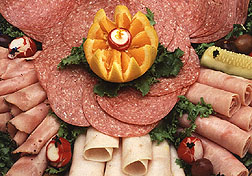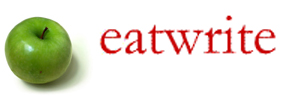FOOD SAFETY
Food Safety – Concerns heat up in the summer!
By Lynn Roblin MSc.RD.

Food poisoning is caused by bacteria in foods. E. coli can be found in undercooked beef and hamburgers, raw milk, unpasteurized apple cider and water that hasn’t been treated with chlorine or boiled. Beef, pork and chicken as well as eggs and other meats, can harbor salmonella. Chicken and raw milk can house campylobacter organisms. Cyclospora can be found on fruit, vegetables or herbs that have come into contact with contaminated water or fecal matter.
Contaminated foods often look, smell and taste normal. Therefore, it is important to handle, cook and store high-risk foods properly to prevent the spread of bacteria and reduce the risk of food poisoning.
High-risk foods include milk and milk products, eggs, meat, poultry, fish, shellfish, creams pies, custards and salads or sandwiches containing mayonnaise. Because bacteria thrive in warm and moist conditions, these foods need to be kept at the right temperature to keep them safe to eat.
A safe temperature for cold foods is below 4° C (40° F) and hot foods above 60° C (140° F). Any temperature in between is called the danger zone because this is where bacteria multiply rapidly. Any foods that have sat at room temperature or in the danger zone for over two hours should be discarded.
Taking a few precautions when preparing, storing and transporting foods, especially during the summer heat, can decrease your chances of a food-related illness.
- Washing your hands thoroughly in hot soapy water before and during food preparation is your best protection against food poisoning. If running water is not available, as when you are camping or out on a boat, use a pot of hot water or a bucket of cold water that contains a capful of chlorine bleach for hand washing.
- Buy meat and dairy products and frozen foods last and put them away in the fridge or freezer as soon as possible. A cooler or insulated carrier with freezer packs can help keep perishable foods cold if you have to travel a fair distance with food.
- Store raw meat, poultry and fish in sealed containers or plastic bags to prevent juices from contaminating other foods.
- Thaw frozen food in the fridge, not on the counter, because bacteria multiply quickly on warm outer surfaces.
- Thoroughly wash all fruit, vegetables, sprouts and fresh herbs. However, cyclospora isn’t removed by washing, so buy Canadian or North American produce that is grown under safe conditions.
- Don’t prepare raw vegetables or other ready to eat foods on cutting surfaces that have been exposed to raw meat or eggs.
- After preparing raw meat or poultry, wash the cutting board and utensils in hot soapy water and then rinse them in a tub of water that contains a capful of chlorine bleach. Camp or boat cooks, may use a spritzer bottle filled with nine parts water and one part chlorine to spray utensils and cutting board after they have been washed.
- Change dish-cloths daily and always after preparing raw meat or poultry. Rinse wash cloths in water and bleach before putting them in the laundry.
- Whether you cook inside, on the barbecue or over a campfire, make sure to cook meats thoroughly. Poultry should be cooked until the juices run clear and there is no pink inside or near the bone. Hamburger meat should never be eaten rare and should be cooked until the meat is no longer pink inside. Steaks can be eaten rare or medium. Fish and seafood must be cooked completely. Fish flakes with a fork when it’s done.
- Marinate meat and poultry in the fridge. Discard marinades that have been in contact with raw meat. Make extra marinade for basting.
- Don’t serve barbecued meat, fish or poultry on the plate you used to take the food out to the barbecue. Use another clean plate to prevent bacteria from transferring to your cooked food.
- For safe picnic and day camp lunches, use plenty of ice or cold packs and thermal containers to keep foods chilled. Fill and freeze plastic juice or water bottles to pack with foods. Pack foods in insulated lunch bags or coolers and keep them in the shade.
- When making potato, egg, tuna or meat salad, chill hot ingredients prior to mixing the final products. Keep these foods cold until they are ready to be served.
- For camping plan meals around foods that don’t require refrigeration such as fresh fruit and vegetables, dried fruit, cereals, grains, pasta, hard cheese, nuts, canned meats and fish, peanut butter, powdered milk or milk packed in aseptic containers. If you do take perishables such as meat and salads, keep them cold in a cooler and use them your first day out.
For more information on food safety contact your local Health Unit. You can also check out the food safety web sites mentioned in Nutrition Links.
